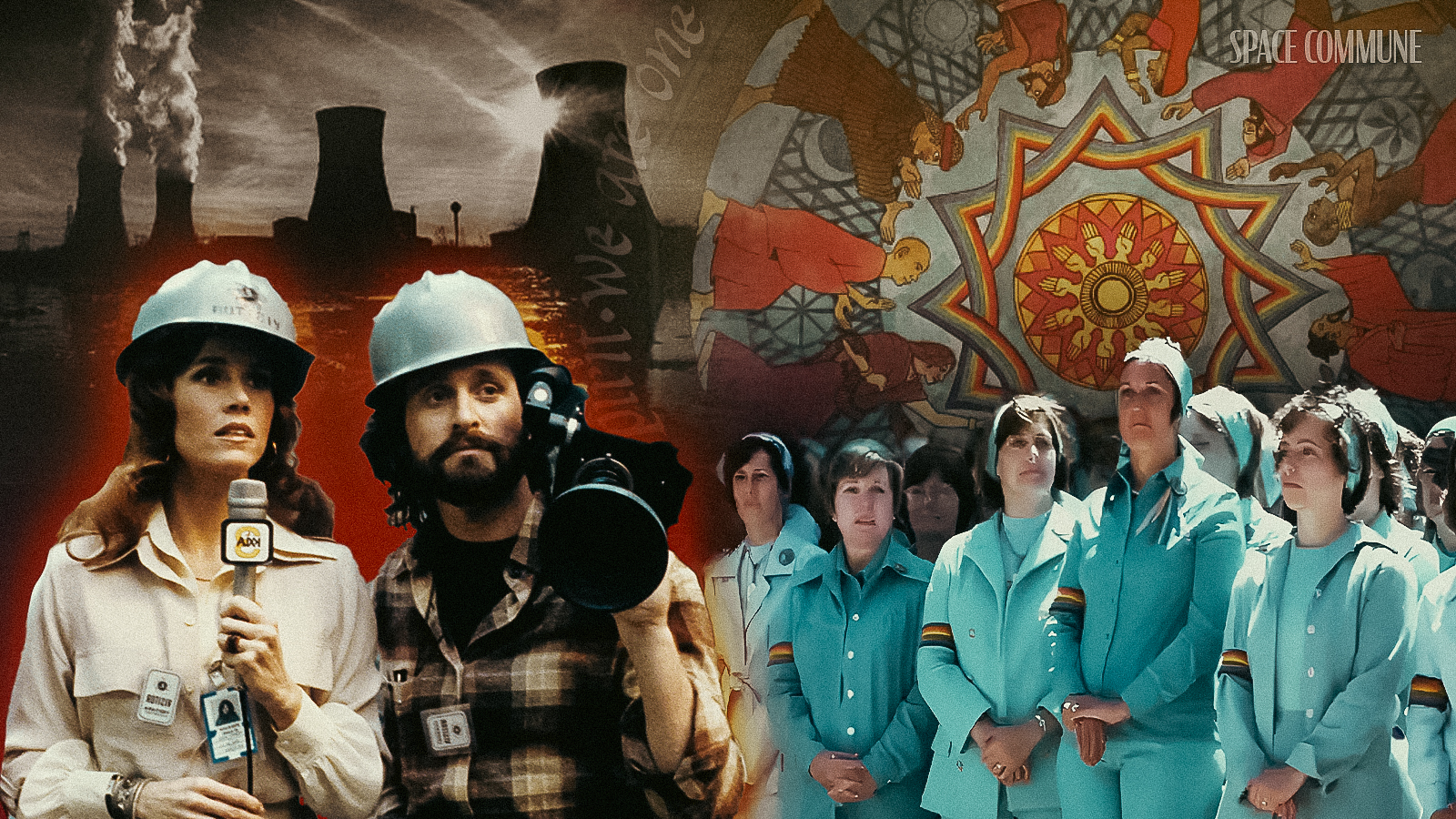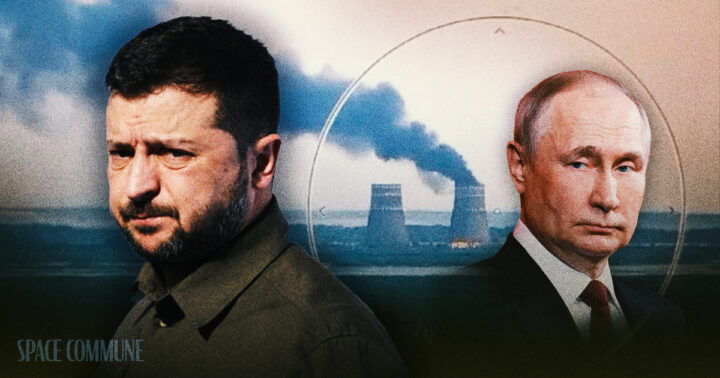45 years ago this week, one of the most famous large-scale accidents of all time took place at Three Mile Island Nuclear Power Plant in Harrisburg, Pennsylvania. No one died, and no peer-reviewed study has been able to prove that the release of excess radiation caused any increase in the cancer rate. But the hysteria around the accident confirmed many people’s fears of industry in the West, justifying a push to lower living standards, a reality that people are just waking up to today.
Today, buried in the shadows of the reactors lies a never-before told tale shrouded in mystery, lies, and an esoteric ecological cult. How did an accident that hurt almost no one become such an effective propaganda tool?
This article is the first of a three-part Space Commune series about Three Mile Island:
- The New Age Conspiracy to Manufacture Nuclear Hysteria
- Exploring Three Mile Island’s Possible Sabotage
- How Three Mile Island Fed the American Anti-Nuclear Movement
The Seeds of Fear
The story begins with the rise of the anti-nuclear movement, fueled by the works of Ralph Nader and Rachel Carson.
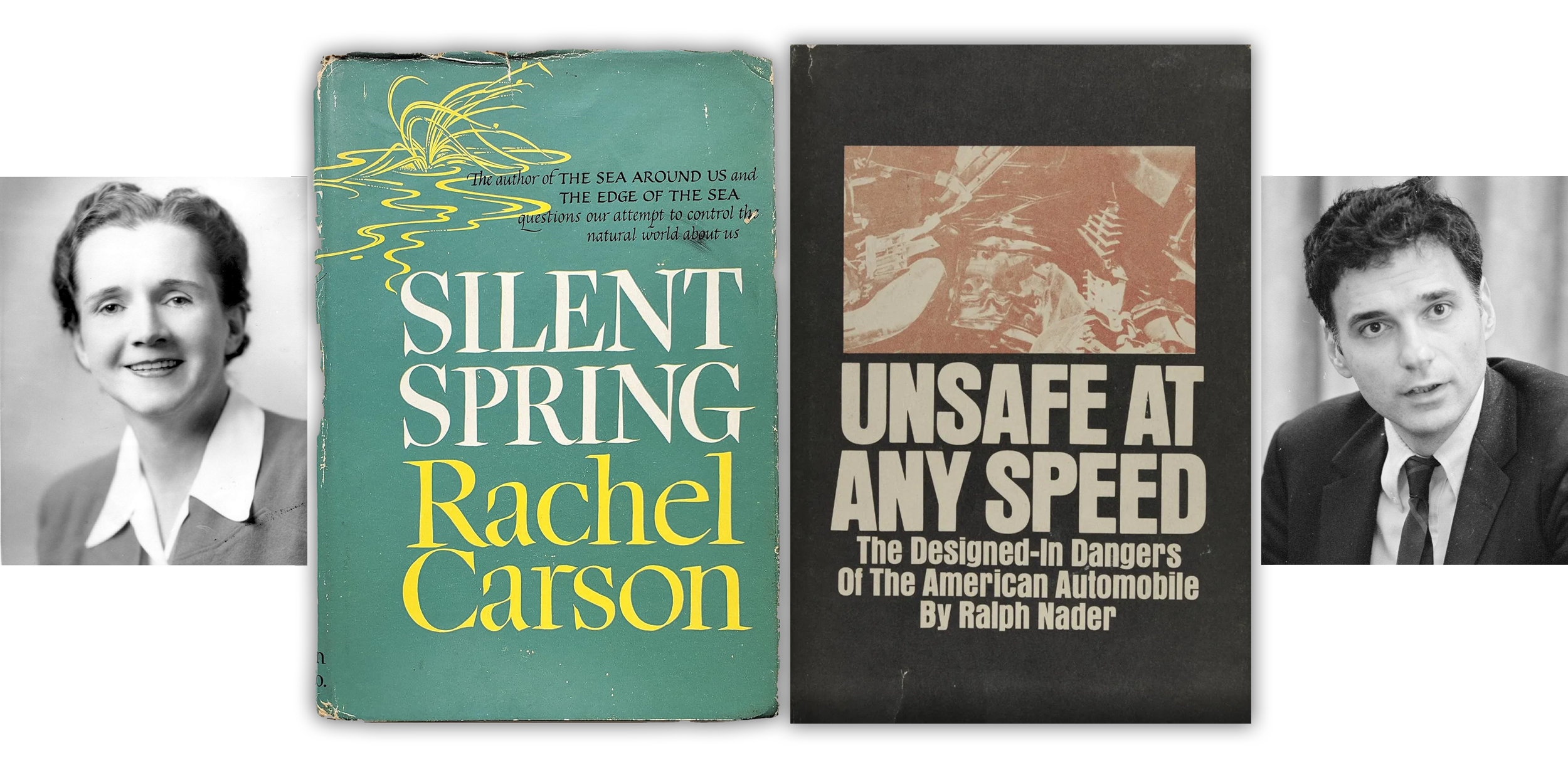
These best-selling books of the 1960s, cloaked in righteousness, established a pathological pattern that exists until this day: every Promethean advancement in industry comes at a steep cost. In this worldview, there is no tradeoff worth making to feed more people, create more energy, or increase economic opportunity and peace through development.
Nader would quickly set his sights on the growing nuclear industry. In 1973, he started by filing a lawsuit alongside Friends of the Earth to shut down 20 nuclear plants around the country, claiming “If the public knew what the facts were and if they had to choose between nuclear reactors and candles, they would choose candles.”
One of his frequent collaborators was a scientist named Dr. John Gofman, who knowingly lied in claiming the “annual release of toxic and radioactive plutonium from nuclear reactors by the year 2000 will kill 500,000 persons each year.” These wild claims helped create a moral justification for no-holds barred tactics and methods.
At the same time, a successful campaign by a handful of rich homeowners in New York’s Hudson Valley to block the Storm King pumped hydroelectric power plant took place. The legal precedent created a cottage industry for foundation-funded NGOs to “monkey-wrench” projects that could possibly affect the environment, and was the legal basis of 1969’s National Environmental Policy Act, which added crippling environmental reviews to large-scale power projects.
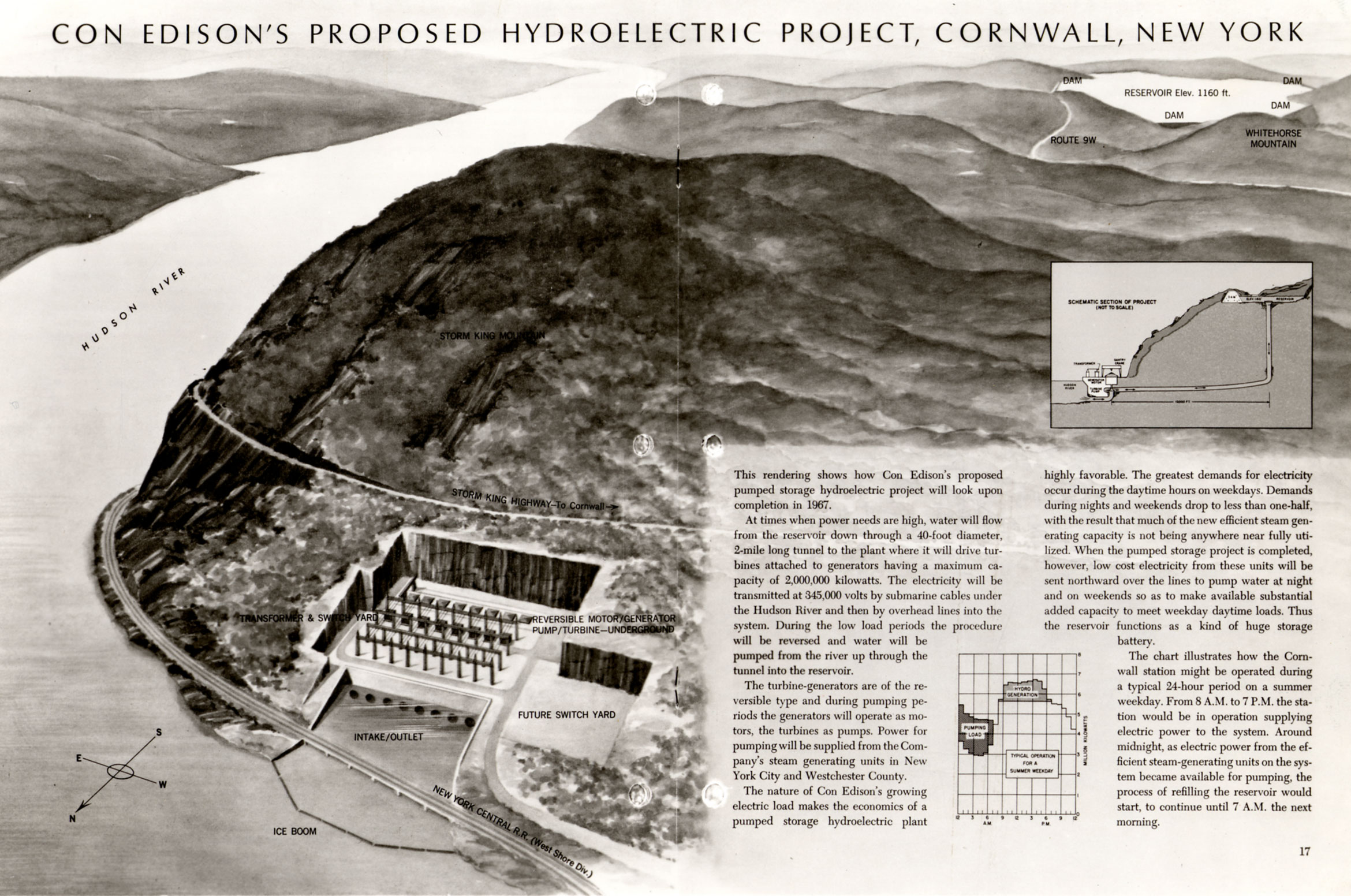
Nixon’s 1970 economic policy that ended the gold-backed Bretton Woods system, combined with the energy crisis of 1973, added fuel to the fire. After decades of steadily rising energy consumption by American citizens, conservation was urged, which made utilities hesitant to pay the rapidly rising interest rates needed to finance capital-intensive nuclear plants.
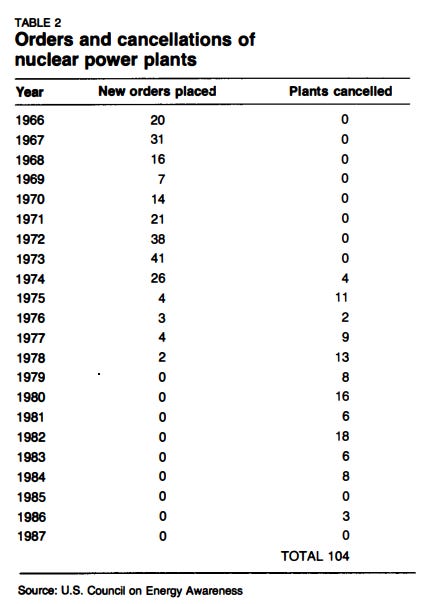
As the 1970s dawned, the vulnerable nuclear power industry in the United States found itself facing a storm of opposition and skepticism. Amidst the turmoil, a peculiar gnostic cult, with roots in LSD experimentation and syncretic mysticism, saw an opportunity to wield influence and shape the narrative surrounding nuclear power.
The Rise of the Post-Industrial, Anti-Nuclear Cult
Enter the Creative Initiative Foundation, a California-based New Age sect that would emerge as a pivotal player in the burgeoning anti-nuclear movement.
The roots of this mystical group can be traced back to the “Sequoia Seminars,” a 1950s-era gathering led by Stanford professor Harry Rathbun and his wife Emilia. These gatherings were characterized by LSD-fueled journeys deep into their ‘seventh veil’ matter, their inmost blocks to further growth and progress on the Way.”
One session, led by LSD pioneer Betty Eisner, was described as “an intensive group therapy situation… conducted on a very personal level aimed at removing barriers within the individual which obstruct his growth in creative living.”
This all happened to take place at the same time and place as the CIA-funded MKULTRA experiments at the Stanford Research Institute. By 1959, almost every member of the Sequoia Seminar leadership team had experimented extensively with LSD.
Accounts of their psychedelic expeditions paint a picture of ego-stripping experiences that left straight-laced engineers with their rational worldviews shattered, leaving them to embark on a journey into mysticism and psychic phenomena.
The cadre of Sequoia Seminar attendees harbored grand ambitions of global transformation, epitomized by their rebranding as “The New Sphere” in the 1960s, a nod to loony Jesuit priest and ecotheologist Pierre Teilhard de Chardin’s conception of the noosphere.

At the heart of their philosophy was a fusion of Darwinism with Christianity. Their leaders claimed to have ascended to the “gnostic plane,” communicating with the cosmic energy that had permeated the universe through all religions.
This syncretic mystical worldview found expression in the seminal work Changing Images of Man, penned by Sequoia Seminar and MK-ULTRA dual alum Willis Harman. Through the Seminars, Harman had been introduced to collaborators like British polymath Gerald Heard (who introduced Aldous Huxley to LSD), Al Hubbard (aka the “Johnny Appleseed” of LSD) and International Foundation for Advanced Study founder Myron Stolaroff, who led cutting-edge experiments in parapsychological properties of psychedelics.
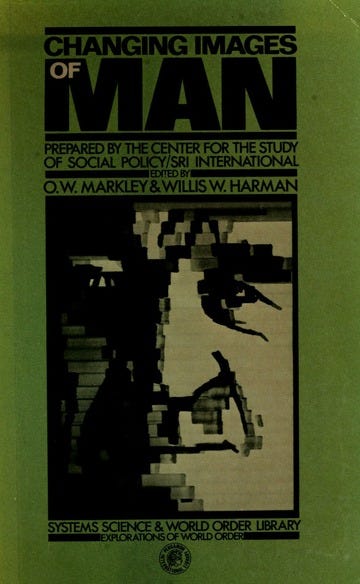
The book envisioned a post-industrial future where human consciousness stood as the ultimate frontier of innovation. Everything that needed to be invented had already been invented, and man should no longer see himself as technologically progressive. After decades of LSD experimentation, Harman identified animal-identification as a useful tool for stripping the idea of man’s dominion over nature from them.
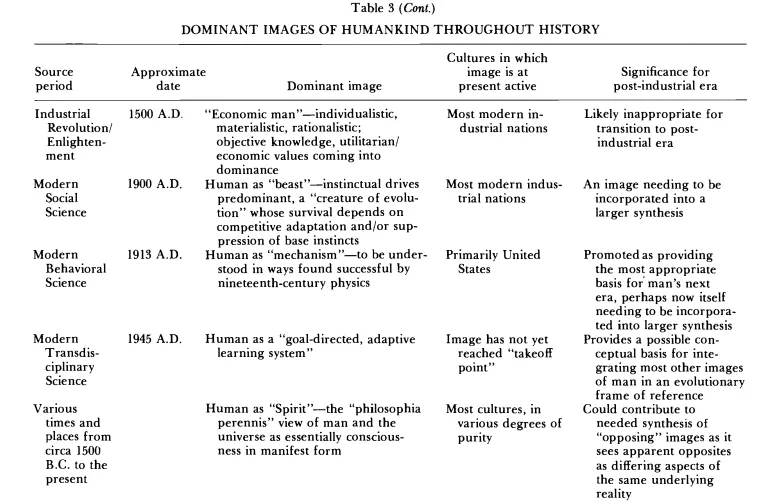
This philosophy laid the groundwork for what would become known as the Human Potential Movement, or “The Aquarian Conspiracy.” At its core was a reexamination of humanity’s assumptions about its origins, nature, and place in the universe. The prevailing images of man from the Industrial Revolution and Enlightenment eras were deemed inadequate for the post-industrial age, necessitating a profound evolutionary transformation. Nuclear power would have no role in this movement.
(Our) analysis of the nature of contemporary societal problems leads to the conclusion that … the images of man that dominated the last two centuries will be inadequate for the post-industrial era.
If a humane and workable future is to be achievable… an evolutionary transformation may be underway that is at least as profound as the transition in Europe when the Medieval Age gave way to the rise of science and the Industrial Revolution.
Willis Harman, Changing Images of Man
The Cult War on Nuclear Power
After hosting a 1975 talk by E.F. Schumacher on the “immense dangers” of nuclear power, the Creative Initiative Foundation, now 2,000 members strong, forged an alliance with Ralph Nader’s anti-nuclear organizations.
Together, they orchestrated a groundbreaking campaign in California known as Proposition 15, which sought to effectively shut down the nuclear power industry via a referendum. This endeavor not only galvanized the anti-nuclear movement but also served as a blueprint for dozens of similar initiatives across the nation.
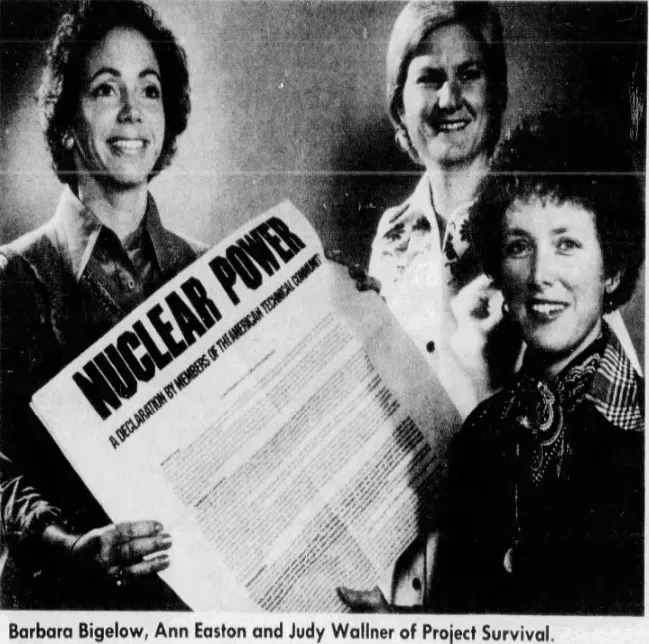
Similar to the environmental movements of today, the CIF had become a magnet for individuals seeking a sense of purpose beyond mere affluence.
Emilia Rathbun asked, “Where do you go after you have attained affluence? There is boredom and pleasure that has no significance or permanency.” The quest for meaning in a world characterized by material abundance propelled many towards the CIF’s cause.
Drawing on techniques derived from the “ego-stripping” sessions of the Sequoia Seminar days, CIF members were spurred to a level of intensity and fervor that set them apart even among staunch anti-nuclear activists. Clad in rainbow pantsuits, the disciplined and determined women of the CIF resolutely marched forth under the banner of “Project Survival.”
Observing the sight of CIF activists in their resolute march, one Pacific Gas and Electric worker likened it to “watching the Hitler Youth corps,” a testament to the movement’s organized and disciplined nature.
Journalist Marianne Means wrote “there is indeed a fanatical aura to the anti-nuclear movement, particularly the Creative Initiative Foundation, a religious-oriented organization providing platoons of chic suburban matrons adamant against nuclear power… [they] are upper-class moonies. Their zeal excluded either surrender or compromise.”
One account said that each CIF activist was worth ten times more than the average volunteer:
“They remind me of Mormons… they’re well-groomed, well-trained and have pink cheeks. They have unusual charisma, drive and capacity,” said Tom Graff, regional counsel for the Environmental Defense Fund. “They seem to draw strength from each other.”
They might have even been too extreme for the normally zealous anti-nuclear movement.
“Some who have dealt with them in the anti-nuclear movement have begun to wonder about their motives. They are bringing in good people, but I do not want any cult-like aspects to permeate this movement,” said Josh Baran, state director for the anti-nuclear project Ground Zero.
“The GE Three” and the National Council of Churches Takeover
Two months before the vote on Prop 15, there was a high-profile press conference where three San Jose General Electric nuclear power engineers (who were also Creative Initiative Foundation members) resigned, citing their deep concerns about the safety of nuclear power and their moral inability to work for a company that was contributing to the endangerment of all humankind with nuclear energy.
“…the three engineers, Dale Bridenbaugh, Richard Hubbard and Gregory Minor, are all active in the same organization, the Creative Initiative Foundation… Persons opposing Proposition 15… have publicly depicted the CIF as a secretive religious cult that either subtly coerced or even bought off the three engineers to gain maximum publicity. Reluctant or not, the Creative Initiative Foundation, a low-profile, religion-oriented movement with about 200,000 active members, mostly in the San Francisco area, is now subject for public scrutiny.
Other nuclear industry workers who were also members of the Initiative were told that they would have to leave the movement unless they supported the anti-nuclear campaign.
On the heels of the press conference, the Creative Initiative Foundation then hijacked America’s largest religious organization by orchestrating the National Council of Churches’ endorsement of an anti-nuclear power resolution titled “The Plutonium Economy: A Statement of Concern.”
Despite being a small gnostic sect within the NCC, the anti-nuclear movement could now claim the support of over 100,000 local congregations and tens of millions of churchgoing Americans.
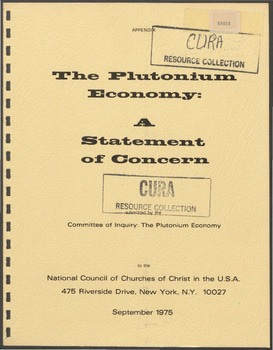
The resolution’s co-signers are a stunning rogue’s gallery of every possible neo-Malthusian, proto-degrowther and deindustrialization enthusiast from the post-war period, including:
- Margaret Mead, the CIA-funded psychedelic anthropologist
- Rene Dubos, Rockefeller University professor and author of So Human an Animal
- Dean Abrahamson, NRDC board member
- George Woodwell, founder of Woods Hole Research Center
- David Riesman, Lonely Crowd author
- Alvin Toffler, Future Shock author
- Robert Jay Lifton, Climate Swerve pop psychologist
- Amory Lovins, Soft Energy Paths
- Barbara Ward aka Baroness Jackson of Lodsworth, president of British International Institute for Environment and Development
- James Watson, Nobel Prize-winning double-helix discoverer/eugenicist
- Barry Commoner, president of the Soil Association
- Paul Ehrlich, Population Bomb author
- John Holdren, future Assistant to Obama for Science and Technology
Despite these efforts and the backing of the NCC, Proposition 15 ultimately failed in California, as did similar propositions supported by Ralph Nader across the country. However, the groundwork laid by these campaigns paved the way for the anti-nuclear movement to gain momentum, particularly in the aftermath of the Three Mile Island incident. The activist and media infrastructure established during this period would prove instrumental in shaping public perception of nuclear energy and its associated risks on a global scale.
The Cult Goes to Hollywood
After the setback of Proposition 15, the three nuclear engineers from the Creative Initiative Foundation (CIF) formed an anti-nuclear consulting firm called MHB Technical Associates.
They undertook various projects aimed at obstructing the nuclear industry’s expansion, but their most significant opportunity came when they were hired as key consultants for the 1979 film “The China Syndrome,” starring the anti-nuclear starlet Jane Fonda.
The film’s advertising ominously warned that if you don’t know what “China Syndrome” means, you will soon. It hit the theaters 12 days before the Three Mile Island Incident.
MHB’s technical expertise lent credibility to the film’s depiction of a nuclear accident, reinforcing the narrative that such disasters were not just hypothetical but imminent. As the events at Three Mile Island mirrored those depicted in the movie, public anxiety reached a fever pitch. The coincidence between the film’s storyline and the real-life crisis fueled speculation about a cover-up by utilities and government agencies.
An analysis at the time by the Fusion Energy Foundation highlighted the film’s effective use of psychological warfare, portraying villains driven by greed and heroes representing the common people. The film’s conclusion, with an ordinary individual demanding an investigation, reinforced the narrative of systemic corruption and cover-up within the nuclear industry:
“[Another] assumption: Science and technology are no more than supererogatory aspects of a human nature thus defined; the power associated with them is thus a magnification of the irrational; and ultimately, anything can happen and nothing makes any real sense… the ‘technology’ on view is used as metaphor for organized, systematic lying. By the time Lemmon takes over the control room of the plant at gunpoint and threatens to blow up a chunk of Southern California in order to explain why the plant must be shut down – a favorite scenario for theorists of nuclear terrorism – he seems positively logical!”
When the exact events that led to Three Mile Island’s accident matched the film’s, it helped cause the mass formation psychosis that a “China Syndrome” was about to happen and that the greedy utilities and government were covering it up.
Three Mile Island: An Event That Was a Decade in the Making
Three Mile Island is a nuclear accident where no one died, and there is no proof that exposure to radiation caused any increase in cancers in the surrounding area. It is remembered because of the mass hysteria it caused; journalists and citizens alike had been brainwashed by the persistent campaigns of Nader and the Creative Initiative Foundation to be terrified of nuclear energy.
The release of the movie “The China Syndrome” served as the final catalyst for the public’s apprehension towards nuclear energy. Produced by Hollywood and shaped by CIF-affiliated consultants, the film depicted a fictional nuclear disaster eerily similar to the events unfolding at Three Mile Island. Its ominous portrayal of the potential dangers of nuclear power primed the media and the public to perceive even minor incidents at nuclear facilities as catastrophic threats. It was seen as such an authoritative source of information, people within the “radioactive plume” went to the theaters to learn more about what was going on. No LSD was needed for this ego-stripping session:
When the partial meltdown occurred in 1979, the stage had already been set for a long time. What is now known as “The Aquarian Conspiracy” had been brewing for twenty years, dating back to the LSD-fueled group psychotherapy sessions at Stanford University. While new nuclear power plants are finally coming back to the United States after 45 years, and former anti-nuclear demagogues like AOC, U2, and even Jane Fonda have changed their tunes, the damage done by The Changing Image of Man and the Sequoia Seminars to our society may have longer-lasting effects than radiation was feared to have.
Coming Next: Was Three Mile Island Caused by Sabotage?
In another coincidence, in the months before the Three Mile Island incident, Los Alamos National Laboratory ran a “sabotage” simulation on a light-water reactor where the sequence of events matched TMI’s.
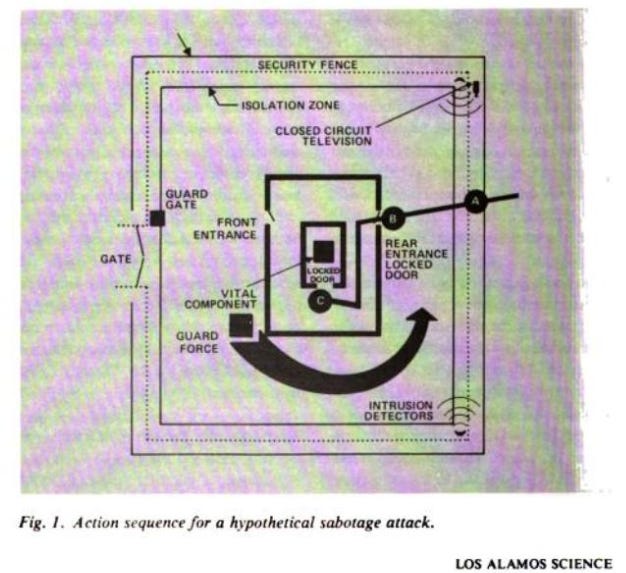
This leads to a troubling question: was Three Mile Island a deliberate act of sabotage? Subscribe below and you’ll receive a copy of our next article in your inbox.
